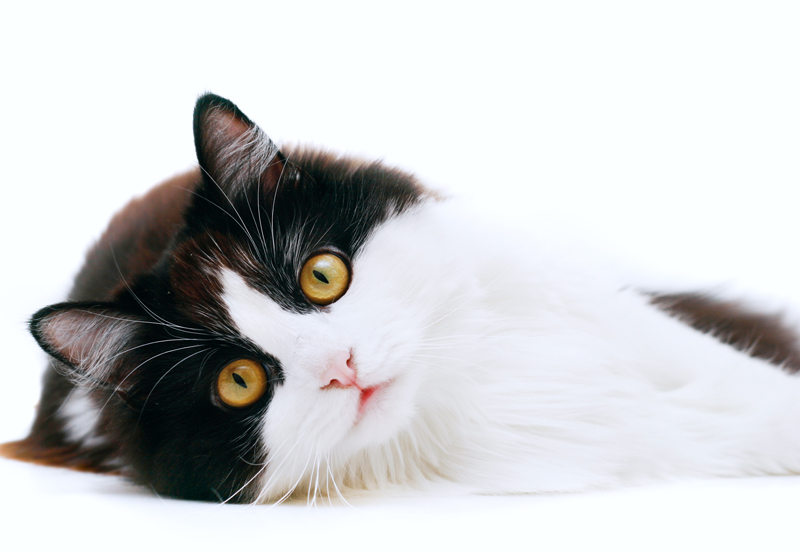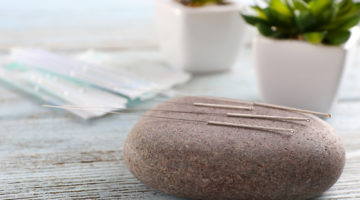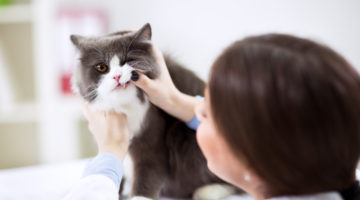Q I want to give my elderly arthritic cat glucosamine, but I don’t know what product to choose or how much to give him. I did some research online and just ended up more confused. My vet isn’t interested in doing anything other than prescribing drugs so I can’t ask her for advice. I recently bought a liquid glucosamine supplement at a local pet store, but it has such a strong odor that my cat won’t touch it, even when it’s mixed into his food. It’s actually for dogs, but the guy at the pet store said it could be used for cats too. Are there any tasteless, odorless glucosamine powders or liquids available for cats, and what should the dosage be?
A Managing cats with osteoarthritis is always a challenge, considering that medications such as non-steroidal anti-inflammatory drugs (NSAIDs) are not well tolerated by most feline digestive tracts and kidneys. Fortunately, there are a variety of ways you can safely make your cat more comfortable on his joints.
One of the best means involves the cooperation of your veterinarian and is called Adequan. It is an injectable joint supplement made by Novartis and is labeled for intramuscular injection in dogs. This is my preferred product for both dogs and cats, as it completely bypasses the stomach and intestines, and effectively enters the joints once absorbed into the bloodstream. The American Association of Feline Practitioners (AAFP) has approved its use as a subcutaneous injection in cats. Adequan is typically given on a once weekly frequency for four to six injections, then tapered down to every two to four weeks for long term administration. A proactive
owner (as it sounds you are) can be instructed on how to properly give Adequan injections at home.
As chondroprotectant (joint supplement) molecules are large and inefficiently absorbed by the digestive tract, I recommend giving a supplement that is appropriate for cats. An oral joint supplement that is effective and well tolerated is Nutramax Dasuquin for Cats. It comes in sprinkle capsules which are easily mixed into soft food or a treat.
Besides a joint supplement, consider giving your cat Omega-3 fatty acids (fish oil), which have a natural anti-inflammatory effect and are an effective complement to an injectable or oral chondroprotectant. Nutramax makes a great fish oil supplement called Welactin for Cats.
As for dosing, I legally cannot recommend a specific quantity without first having examined your cat (as of the past 12 months in the state of California). Most supplements have the per body weight dose right on the bottle.
If your veterinarian is unwilling to cooperate in improving your cat’s quality of life via multimodal pain management, it is time to start looking for a new feline health care practitioner. Consider seeking out a veterinarian who does acupuncture (another helpful tool). See the International Veterinary Acupuncture Society (IVAS) “veterinarian search tool” at ivas.org/Members/VetSearch/ tabid/124/Default.aspx.
Q We have an eight-year-old cat diagnosed with pseudomonas in her respiratory tract/nasal passages. She is very difficult to pill so we have resorted to once daily Baytril injections. (Two other courses of different oral antibiotics yielded no results.) The lymph nodes under her eyes are swelling and she has started to “bleed” from her eyes. She also breathes with a snort; we’re told pseudomonas can cause destruction of the nasal cavity so she may always sound like that. Have you had any experience with pseudomonas? I get the impression the professionals at the clinic feel we should save the money and aggravation and euthanize our cat.
A I empathize with the great challenge you face in managing your cat’s illness while best looking out for her quality of life. Pseudomonas is a bacterial infection that can be cultured from your cat’s respiratory tract, other locations on her body, or from the environment. We also have to consider that the pseudomonas diagnosis may not necessarily be completely representative of the primary and/or secondary disease processes currently affecting your cat’s respiratory tract.
If there has been limited response to treatment, then underlying inflammation (environmental allergens, etc.), infection (bacteria besides pseudomonas and fungal, parasitic or viral organisms), or neoplasia (cancer) may be present. The best way to make a true diagnosis is through biopsy, where a piece of tissue is collected during an anesthetized rhinoscopy (fiberoptic scoping of the nasal passages). Performing an upper respiratory disease panel (Idexx URD Panel) on an oral and conjunctival swab can help isolate other bacteria or viruses that may not show up on a biopsy or nasal discharge culture.
From an allopathic perspective, your cat’s pseudomonas may respond better to the combination of Zithromax (Azithromycin) and Baytril (Enrofloxacin), as compared to single agent treatment with Baytril. The Zithromax helps to break down the cell wall protecting pseudomonas, which allows better penetration by Baytril or other appropriate anti-microbial agents.
Besides the antibiotic, are you supporting her respiratory tract by strengthening her immune system and using nebulization therapy (see next paragraph)? A variety of treatments and supplements can augment a cat’s immune health and have an anti-inflammatory effect, including acupuncture (especially B12 aquapuncture), Omega 3 fatty acids, and whole food-based vitamins, minerals and antioxidants.
Nebulization uses steam therapy to moisten airways and break up congesting nasal discharge. Most cats are very tolerant of being confined to a steamy bathroom with the door closed and shower on (with your cat not in the shower, of course) for ten to 15 minutes at least twice daily. Short term use of Little Noses decongestant can also help reduce airway secretions. Nasal irrigation with saline solution can safely help flush the nose of debris on an as-needed or frequent basis.
As cats rely heavily on smell to eat, make sure to feed soft cat or baby foods that are slightly warmed; this makes eating more appealing (aroma is released when food is warmed) and is easier on your kitty’s sore mouth. As for euthanasia based on her current condition, I would explore other options first, provided her quality of life has not significantly decreased and that the cost associated with further diagnostics and treatment is within your means.

Veterinarian Dr. Patrick Mahaney graduated from the University of Pennsylvania School of Veterinary Medicine in 1999. He is a certified veterinary acupuncturist (CVA) from the International Veterinary Acupuncture Society. He started California Pet Acupuncture and Wellness, Inc. to offer house call based integrative veterinary medicine to dogs and cats in Los Angeles. Dr. Mahaney writes a veterinary blog for www.patrickmahaney.com and contributes to pet media sites, radio and television. His first book, The Uncomfortable Vet, wi ll be available by the end of 2011.







No Comment